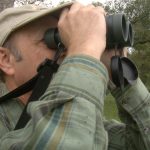Just what is the County Extension Service?
You’ll often see “Contact your local Extension Office for more information.” What IS Extension, exactly?
Whatever you want to know about planting, your local Extension Office can help you in person, through workshops, Master Gardener programs, online resources and even webinars. They analyze problems, give you best planting times and varieties for your area, tackle garden pests, and lots more.
2014 is the hundred-year anniversary of the Smith-Lever Act of 1914, the legislation that created the national Cooperative Extension System.
While I’m definitely proud to be a part of this national system, I’m extra proud that almost a decade prior to the Smith-Lever Act, Texas had the very first County Extension Agent in the nation, in Kaufman County.
Our system’s history has its roots in teaching youth about agriculture. A tradition that began with Boy’s Corn Clubs continues today as 4-H, one of the signature programs in Extension across the nation. Ladies’ Home Demonstration Clubs are also a big part of our past, and are now becoming relevant again, with our culture’s renewed interest in canning, preserving, sewing, and all manner of other “home arts.”
Of course, as our population grew and we moved into urban centers, home gardening and beautification became important as well.
And that’s where I fit in. I’m a county horticulturist, and it’s my job to help people in our community, including viewers like you, not only to grow pretty flowers, trees, and vegetables, but also to do so safely, while protecting our environment and our precious natural resources.
Find your Extension Office.
And check out Texas A&M AgriLife Extension in Travis County, where we look forward to meeting you at our many hands-on, free, or low-cost workshops. Link to our Horticulture website for plant information, workshops and our latest in home horticulture.

 Ed Fair
Ed Fair Mark Simmons
Mark Simmons Daphne Richards
Daphne Richards Trisha Shirey
Trisha Shirey